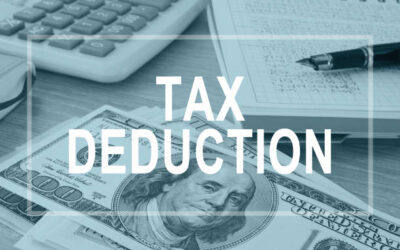Blog
Distributions from Retirement Accounts
Distributions from Retirement Accounts
For those who are nearing the age of seventy-two (72), there is a little-known tax law called the Required Minimum Distribution (RMD). If you have money put away in IRAs, 401ks, or other retirement accounts, once you reach the age of 72 years old, money must be distributed from these retirement plans.
The Internal Revenue Service requires that distributions be taken every year once you reach the age of 72. You can wait until April 1st of the year after you reach 72 to take your RMD but there are some complications with taking a distribution then. If you do choose this, you will be required to take two distributions in that year to make up for the distribution that you passed up at age 72.
How much to take out of your retirement plans depends on many factors. For instance:
- Your marital status
- The difference in age of the spouses if you are married – if there is a ten year or more difference in age, a different table is used to compute the RMD
- Compute the total amount of all retirement plans, divide it by the factor or number on the mortality table the Internal Revenue Service uses, and this determines what your annual RMD should be
- Repeat steps 1 – 3 annually
For many taxpayers, the value of your retirement plans will change every year. The value as of December 31st of the previous year is the number that is used to compute the RMD for the current year. (Example: You must compute the total for all your retirement accounts as of December 31, 2017, to help determine what must be distributed by December 31, 2018.)
This distribution can be taken out at any time during the year. While taxes are not required to be withheld from distributions, remember to submit estimated taxes to pay for this additional income on your tax return. Your accountant knows these rules but be sure you compute and distribute your RMD before December 31st each year. The penalty for not meeting the RMD is 50% of the amount that should have been distributed.
To many, taking money out a retirement account is something you dread because it means that you have had no choice, financially, but to distribute funds from retirement accounts.
This may be because you are over the age of 72 and you have no choice but to start distributing money out of your retirement account. If you are under the age of 59 ½ you could be penalized by the Internal Revenue Service for taking premature distributions. Depending on the type of retirement account you have, the penalty can range from 10% – 25%.
BUT THERE ARE WAYS TO AVOID THESE PENALTIES, UNDER CERTAIN CONDITIONS.
Here are some ways to take money out of a retirement account WITHOUT having to pay a penalty, if you are under 59 ½ years old by the end of the year:
- Death (monies paid to beneficiaries from retirement accounts are not subject to penalty)
- Divorce (money paid to an ex-spouse as part of a divorce is not subject to penalty)
- Disability (if you take money out because you are disabled, it is not subject to penalty)
- Education expenses (distributing money for education expenses for you or your dependents is not subject to penalty)
- Medical expenses (medical expenses paid above 7 ½% of your income are not subject to penalty)
- Medical insurance if you are unemployed (paying your Health insurance is allowed in the year you are unemployed for 2 months or longer.
- You live in a Federal Declared Disaster area (taking money out of retirement can replace items not covered by insurance)
- Equal distributions over remaining life (taking money out of a retirement account equally over the remaining years of your life can be done without penalty). The IRS uses a table to determine the minimum amount to be withdrawn, based on your age at the time you start withdrawing funds.
- Down payment on a house (you can withdraw up to $10,000 to buy a home if you have not owned one in the last 2 years).
Here are seven things from the IRS that you should know about early withdrawals from retirement plans:
- An early withdrawal normally means taking money from your plan before you reach age 59½.
- If you made a withdrawal from a plan last year, you must report the amount you withdrew to the IRS. You may have to pay income tax as well as an additional 10 percent tax on the amount you withdrew.
- The additional 10 percent tax does not apply to nontaxable withdrawals. Nontaxable withdrawals include withdrawals of your cost to participate in the plan. Your cost includes contributions that you paid tax on before you put them into the plan. Or funds contributed to the plan that did not receive a tax deduction for doing it.
- A rollover is a type of nontaxable withdrawal. Generally, a rollover is a distribution to you of cash or other assets from one retirement plan that you contribute to another retirement plan. You usually have 60 calendar days to complete a rollover to make it tax-free.
- There are many exceptions to the additional 10 percent tax. Some of the exceptions for retirement plans are different from the rules for IRAs. See the bullet points mentioned earlier to see if they apply to your situation.
- If you make an early withdrawal, you may need to file Form 5329, Additional Taxes on Qualified Plans (Including IRAs) and Other Tax-Favored Accounts, with your federal tax return.
- The rules for retirement plans can be complex. Call today, don’t delay! See how this affects you. We can be reached at 602-264-9331 and on all social media under azmoneyguy.
Related Blog Posts
Tips for Farmers and Farm Tax Returns
Learn how to pass on more of your wealth to your heirs and pay less to the government before it's too late! Click here...Address & Map(602) 264 - 9331CLIENT PORTALAddress & Map(602) 264-9331 Bringing food to the plate matters. So those who toil hard to...
Deductions allowed when you do not itemize
Learn how to pass on more of your wealth to your heirs and pay less to the government before it's too late! Click here...Address & Map(602) 264 - 9331CLIENT PORTALAddress & Map(602) 264-9331[DISPLAY_ULTIMATE_SOCIAL_ICONS] There are lines and then there...
Basis, Capital Gains, and Losses
Learn how to pass on more of your wealth to your heirs and pay less to the government before it's too late! Click here...Address & Map(602) 264 - 9331CLIENT PORTALAddress & Map(602) 264-9331[DISPLAY_ULTIMATE_SOCIAL_ICONS] Now is the time to act smart,...
Do You Owe The IRS?
Learn 5 Secrets The IRS Doesn't Want You To Know.
Click on the button below to get FREE access to this exclusive content.
Get Expert Tax Advice from an expert
Mr. Hockensmith has been a guest newscaster for national and local TV stations in Phoenix since 1995, broadcasting financial and tax topics to the general pubic. He has written tax and accounting articles for both national and local newspapers and professional journals. He has been a public speaker nationally and locally on tax, accounting, financial planning and economics since 1992. He was a Disaster Reservist at the Federal Emergency Management Agency, for many years after his military service. He served as a Colonel with the US Army, retiring from military service after 36 years in 2008. Early in his accounting career, he was a Accountant and Consultant with Arthur Andersen CPA’s and Ernst & Young CPA’s.










